If you have ever wondered what the difference between a French boule and an Italian loaf is, you’ve come to the correct place.
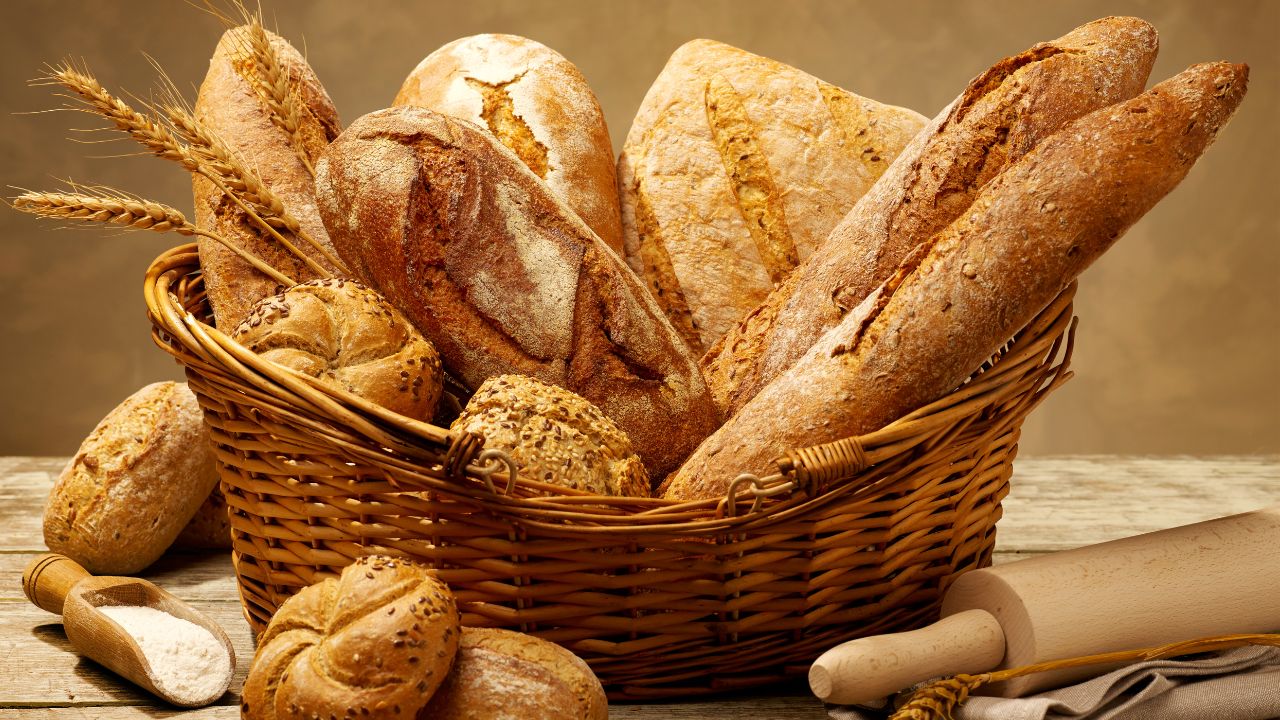
Bread is an essential element of many people’s diets all over the world, so knowing a bit about bread will prove beneficial at some point in your life when it comes to recipes, cultures, and diet.
Here’s an in-depth look at the many sorts of bread.
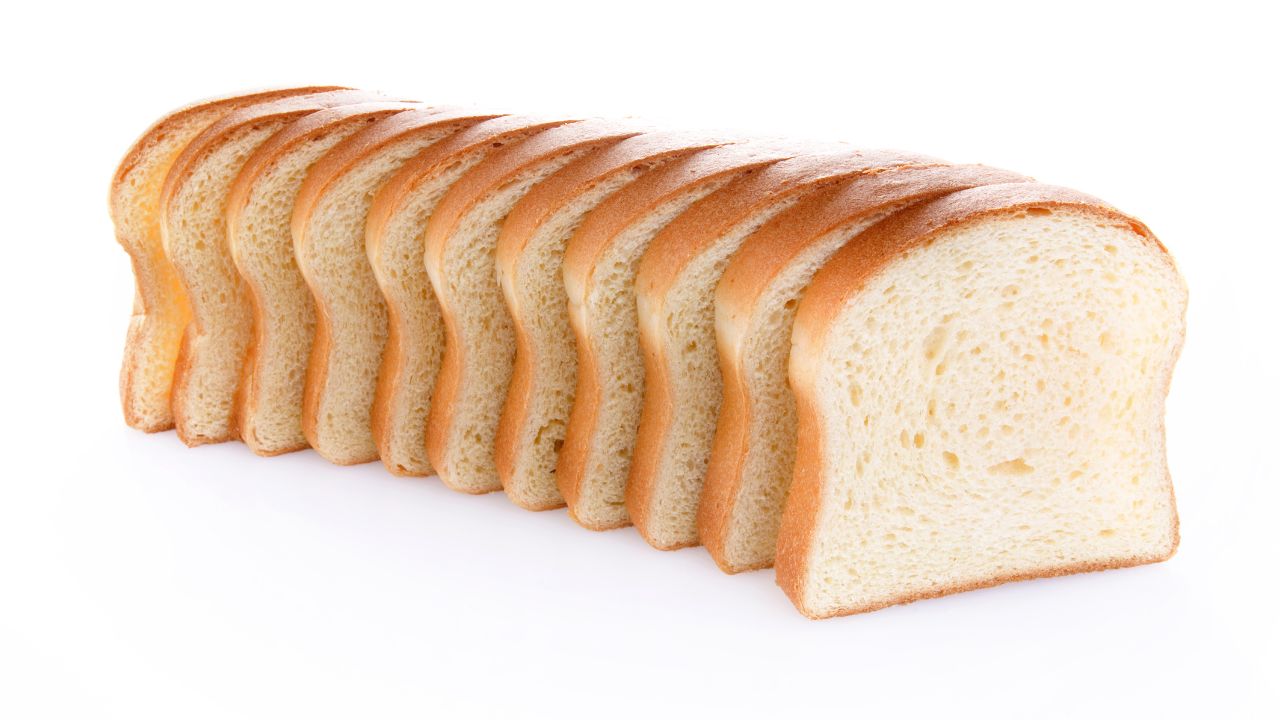
1. White Bread
White bread is the most common sandwich bread and is also known as a sandwich loaf. Wheat flour, yeast, and water are the key elements in making a white bread.
The majority of white breads have a delicate, fluffy middle with a medium to soft crust. Because it is frequently used for sandwiches or toasting, square white bread is the most prevalent form.
Other varieties of white bread are formed into various bun shapes. These bread rolls are a mainstay of cuisines like hotdogs and hamburgers, and they may be filled with a variety of sandwich contents.
White bread isn’t as nutritious as whole grain or whole wheat bread since it has less nutrients compared to whole wheat flour.
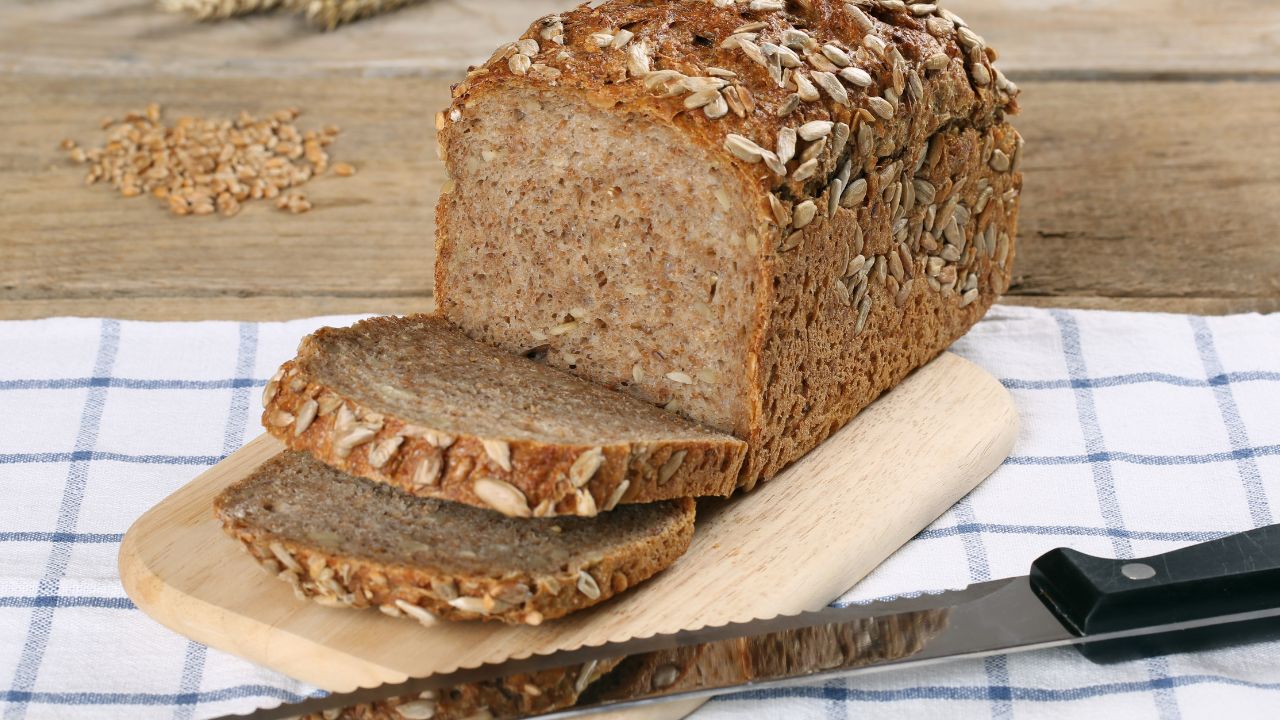
2. Whole Wheat Bread
It is a type of brown bread which is made with flour that has been partially or completely milled from whole or near-whole wheat grains. Wholemeal bread, wheat bread, and whole-grain bread are some other names for the bread.
The composition varies by nation, with some retaining the germ, bran, and endosperm while others removing one or two of the elements.
Even though it is marketed as whole wheat bread in Canada, some wheat germ is removed from the flour.
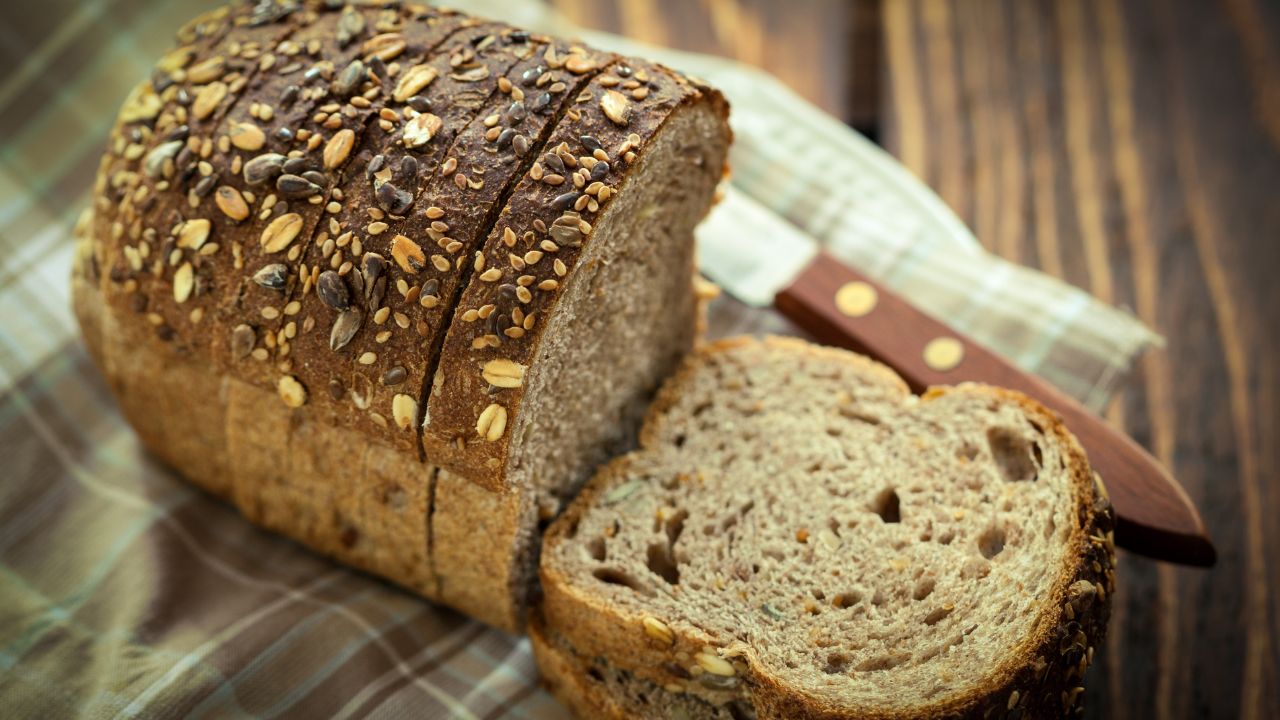
3. Multigrain Bread
This bread is made with two or more grains, the most frequent of which are barley, millet, flax, oats, whole-wheat flour, and wheat. Seeds such as pumpkin seeds, sunflower seeds, quinoa, and flaxseed are also included in some.
However, their history stretches back to the Egyptian era, when loaves were cooked with only one ingredient.
These sweet, soft breads, which have been marketed in US newspapers since 1954, outperform white breads in terms of vitamin, protein, and dietary fiber levels.
Because multigrain bread is created from fiber-rich flours, it has a lower glycemic index than white bread, making it a better choice for individuals with heart disease or diabetes, as well as those on a diet, because it keeps you feeling fuller for longer.
When compared to white bread, the many grains utilized in this variety of bread include additional nutrients such as zinc, protein, and B vitamins while being a good source of carbs.
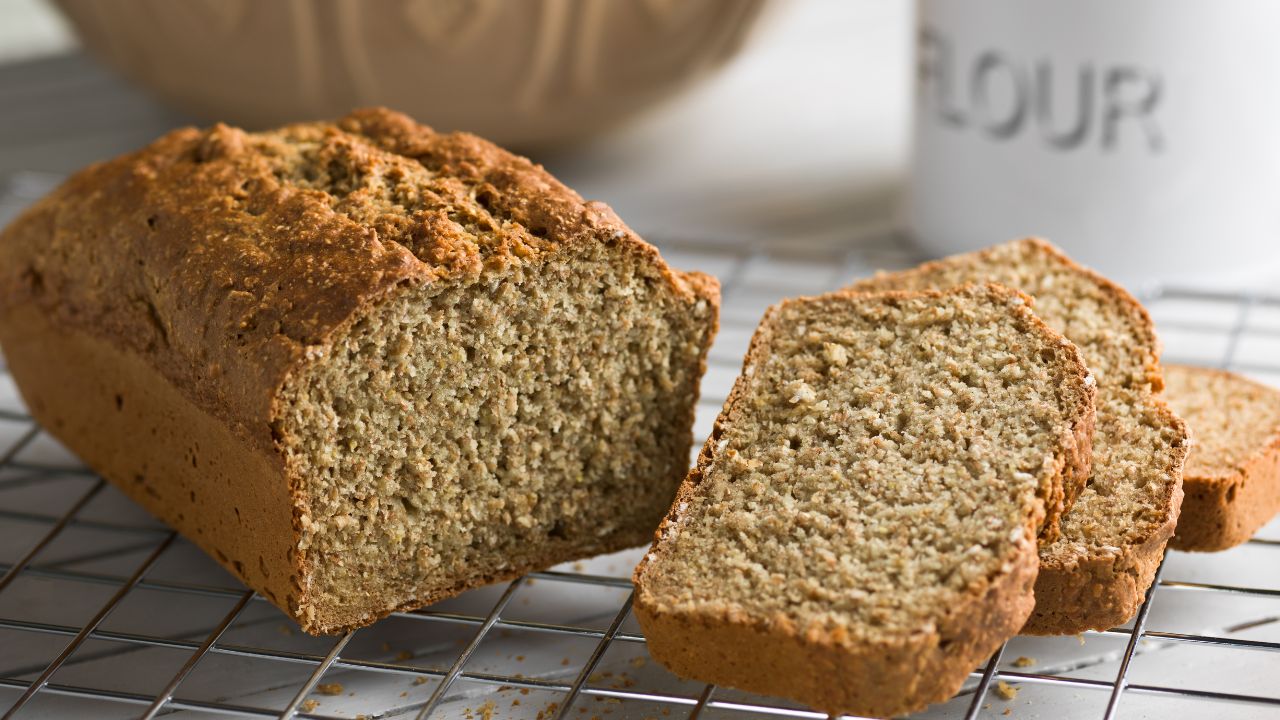
4. Brown Bread
One of the most common forms of brown bread is Boston bread, which is created in America. The name derives from the place where the bread was initially baked and has since gained popularity.
This bread is often baked with a mixture of flours or whole wheat flour known as “thirded” loaves since the flour consists of one-third whole wheat flour, one-third cornmeal, and one-third rye flour.
Boston brown bread is frequently leavened with baking soda instead of yeast and is typically steamed in a cylindrical container rather than dry-baked in a skillet.
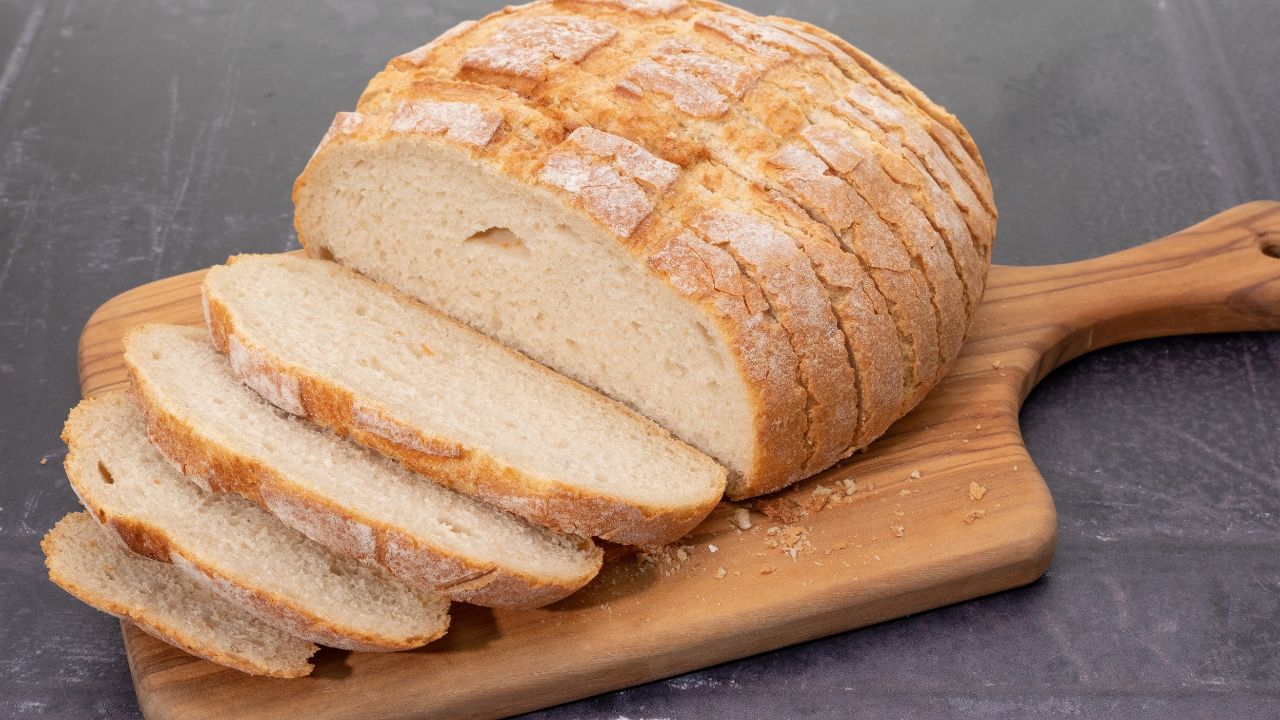
5. Sourdough Bread
Sourdough is a type of wheat bread that rises due to the use of a fermentation “starter” and wild yeast (see also ‘26 Simple Sourdough Discard Recipes‘).
The starter is made with wild yeast and lactobacilli bacteria, as well as fermented wheat and water. The “sourness” of sourdough bread is caused by the formation of lactic acid during the fermentation process.
Sourdough bread is a terrific form of sandwich bread to enjoy at any time of day due to its chewy texture.
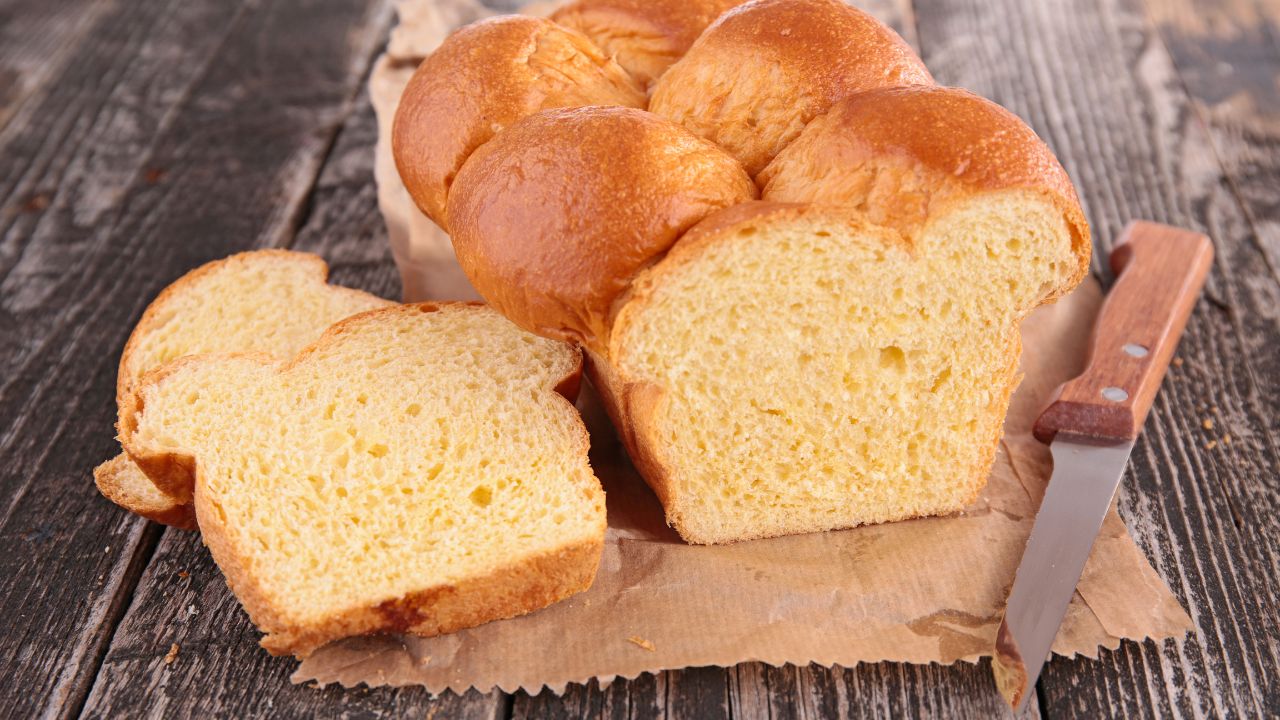
6. Brioche Bread
If you like butter, you’ll adore the rich and fluffy texture of the brioche bread. This is another sort of French bread prepared with butter and eggs. Brioche bread has a delicate texture and a little sweetness to its flavor.
Brioche is quite adaptable. One of the great things about brioche bread is that you can create anything with it. It is suitable for all meal times, including breakfast, lunch, brunch, supper, snacks, and desserts.
It also goes well with both sweet and savory foods, so the options are limitless.
Brioche bread can be in any recipe that asks for regular bread. It is great on bread and butter pudding, toasted, or grilled sandwiches, and even burgers and hot dogs (see also ‘Top 20+ Tasty Hot Dog Toppings‘).
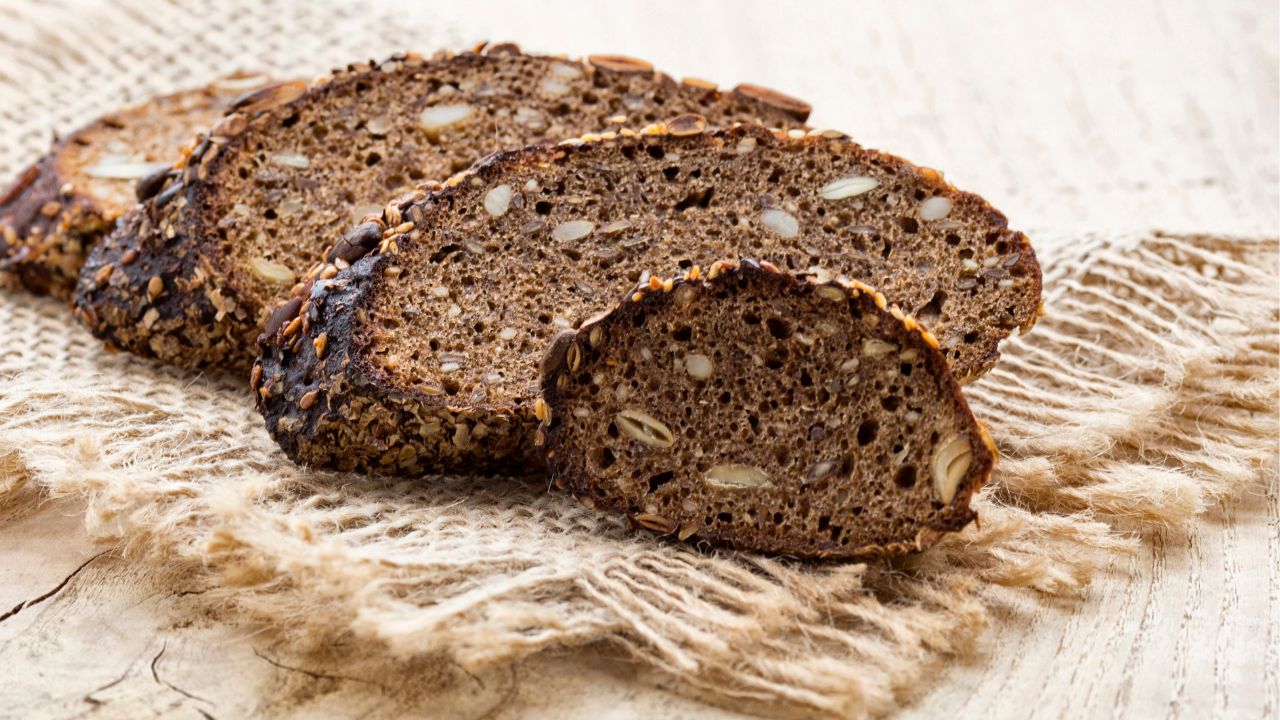
7. Rye Bread
Rye bread, prepared from rye flour, is another healthy bread alternative. Rye bread is denser and heavier than regular white bread or whole wheat bread.
The increased fiber content of rye bread makes it healthier than white bread. In addition, rye bread has more complex carbs than white bread.
As a result of its lower glycemic index, consuming rye bread does not induce rapid rises in blood glucose levels.
Rye bread can range from a light brown hue with a smooth texture to a dark, nearly black color with a strong flavor, depending on the type of rye flour used.
Rye bread also comprises many types of “black” bread. There’s dark pumpernickel bread, crunchy flatbreads, and softer multigrain rye bread, for example.
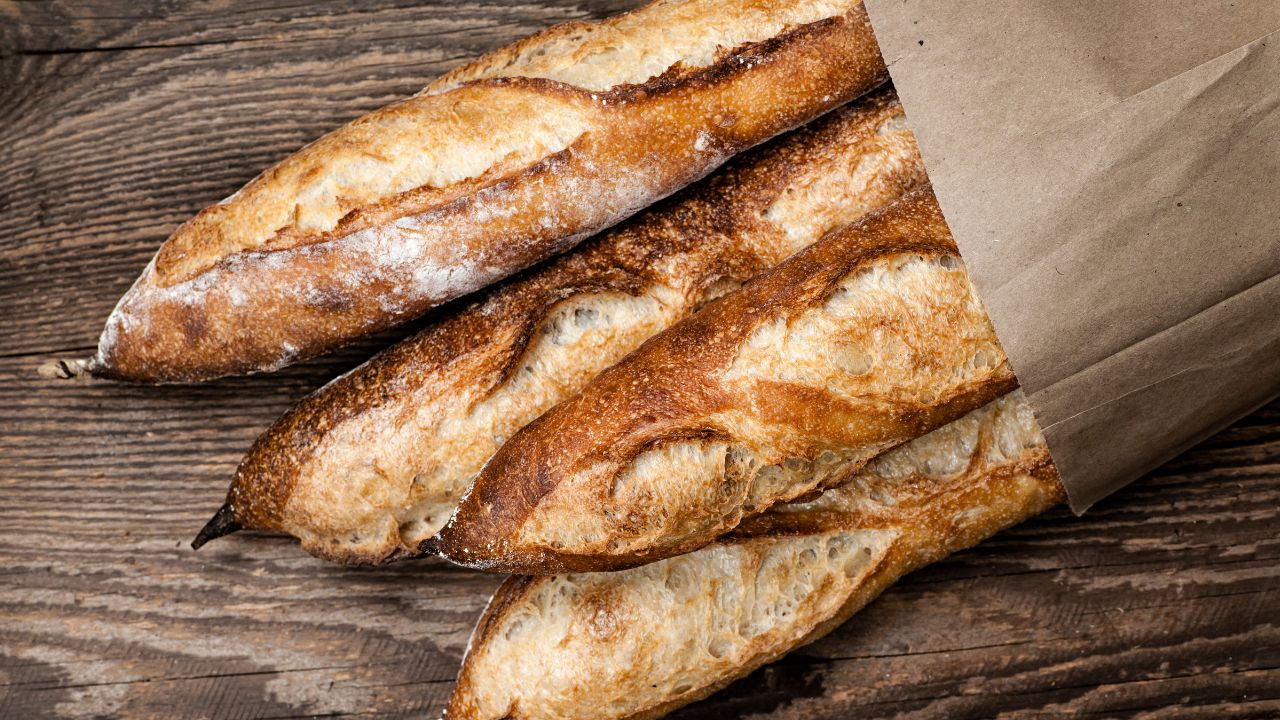
8. Baguette Bread
Baguette is a long, thin crusty French bread made with wheat flour, table salt, yeast, and water.
Because of its form, its name after 1920 translates to baton, staff, or wand. They first appeared during the time of King Louis XIV, however they were longer, thinner, and broader.
They can also be produced with different types of dough, such as rice flour (in Vietnam), sourdough, and multigrain (in North America).
Though baguettes can be enjoyed on its own or with an olive oil or balsamic vinegar dip, they can also be paired with additional components. The most common combination includes tomato, garlic, olive oil, and basil to produce bruschetta.
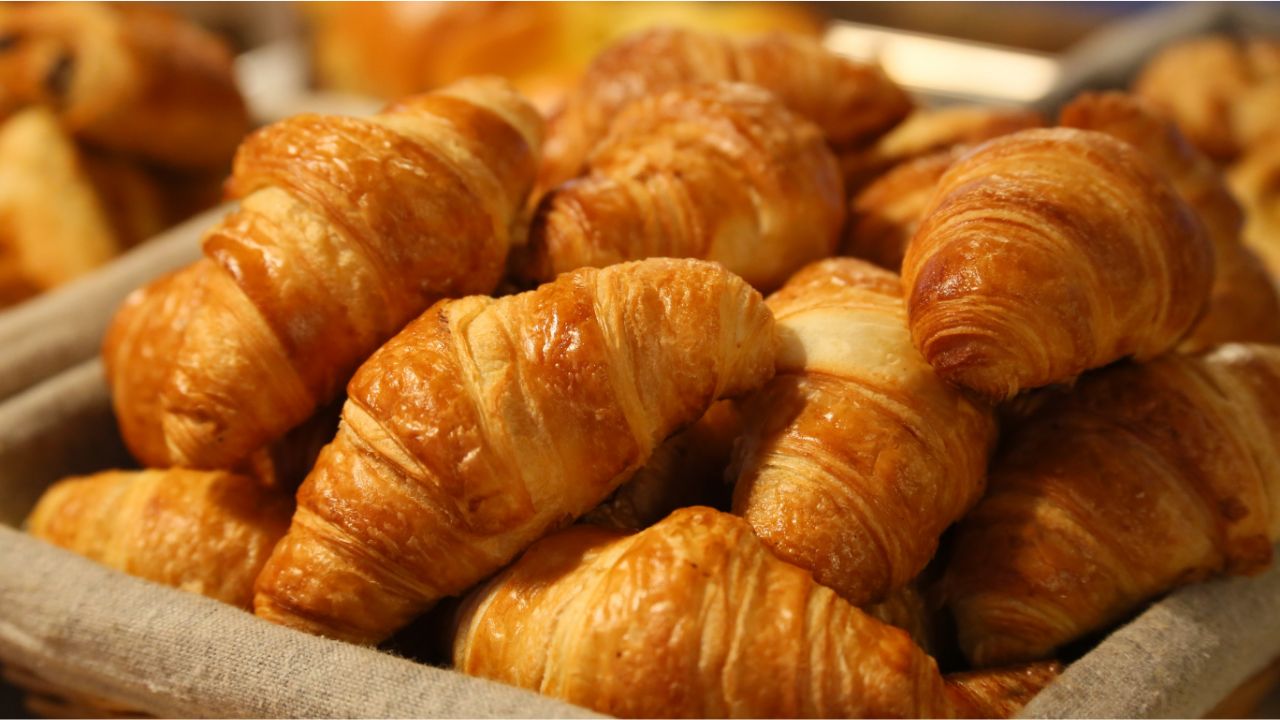
9. Croissant
A croissant is a crescent-shaped yeast-risen dough roll. Typically, the dough is coated with butter before being rolled and folded numerous times in a process known as lamination.
The finished dough is divided into triangles and shaped into a crescent shape. This lamination procedure produces a layered, flaky-textured roll that resembles puff pastry.
Making croissants takes patience, many days, and pastry talent.
For this reason, many cooks choose to get ready-to-bake croissants or frozen puff pastry dough, because frozen doughs are simple to work with and typically taste absolutely satisfactory.
Buying frozen dough or croissants also allows bakers to make only as many as they need, as croissants taste best fresh out of the oven.
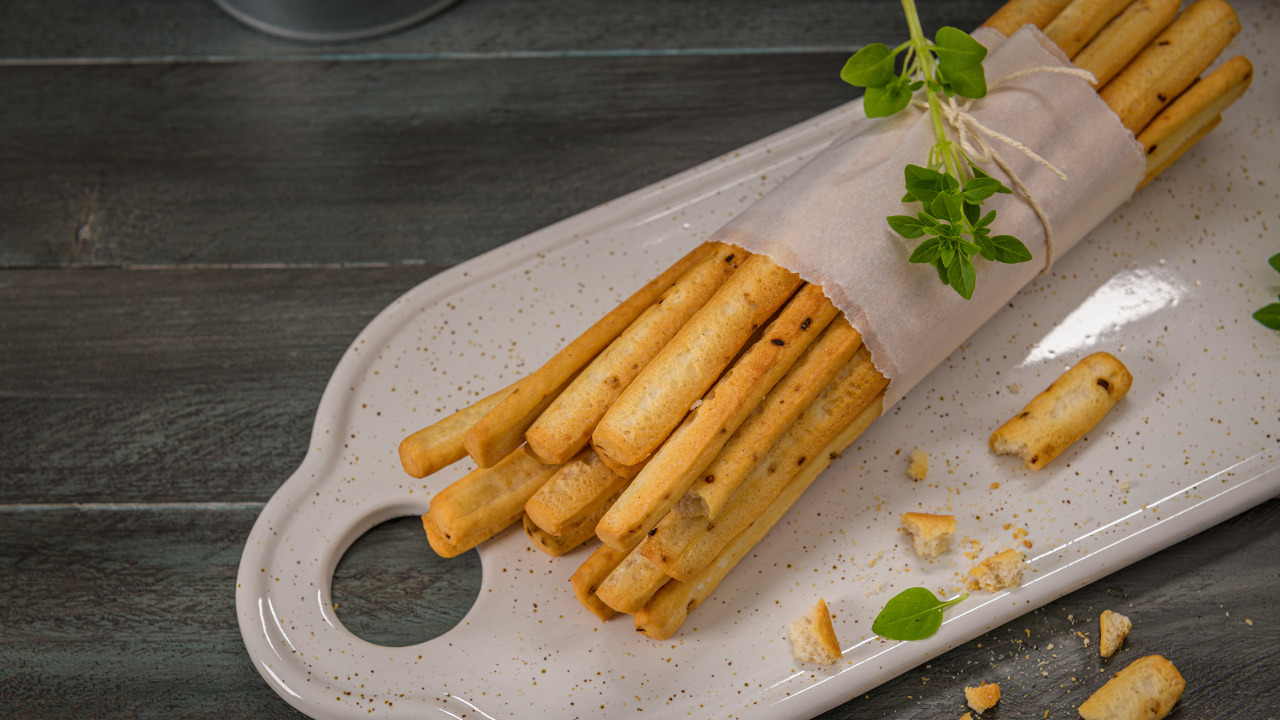
10. Grissini Bread
Grissini are long, thin slices of dry, crunchy bread. They are more often known as bread sticks in many English-speaking countries, and they are a favorite complement to many Italian dinners.
Grisini have been modified by chefs who specialize in various cuisines since they match nicely with a range of dishes and make a great standalone snack.
Many markets sell grissini, which may also be created at home by cooks who want to experiment with different ingredients.
There are several ways to serve grissini. At an Italian lunch, a tray of them on the table is absolutely suitable, and they may also be used to make appetizers such as bread sticks wrapped in proscuitto.
They may also be eaten as a snack, and the more bready varieties can nearly serve as a meal in and of themselves, especially when topped with Parmesan.
11. Ciabatta Bread
Ciabatta is an Italian rustic bread made with wheat flour, water, salt, olive oil, and yeast. The term, which means “slipper” in Italian, relates to the shoe’s extended, wide, and flat design.
Ciabatta can be cut into long rectangles, little squares, or rolls, and has a crunchy and chewy crust with an airy, hole-filled center.
Ciabatta’s chewy texture and honeycomb pores make it perfect for dipping into soups. It also makes an excellent sandwich bread when layered with cheeses, cured meats, and balsamic vinegar.
12. Challah Bread
Challah is a braided loaf of bread. Eggs, yeast, wheat, water, and salt are used to make the basic dough. Due to the fact that so many eggs are used, it is often light yellow in color and has a rich flavor.
Some recipes for challah include raisins, honey, or seeds. It all depends on the occasion and your own tastes.
Each of the three strands is said to represent the Ten Commandments’ injunction to observe Shabbat. These three tell us to remember, to protect, and lastly, to do these two acts simultaneously.
The braid of the challah, like the last strand, depicts the weaving together and completion of the week, which Shabbat is supposed to signify.
Because Jews are expected to relax on the Sabbath, they are mentally and physically summarizing their previous weeks. As a result, the braided challah is a nice metaphor for the rest period that begins on Friday at sunset.
13. Bagel
The bagel, also known as the beigel, is a ring-shaped bread that originated in Poland’s Jewish community. Its preparation procedure makes it doughy, chewy, and dense on the inside and crispy on the outside.
Sesame and poppy seeds are customary seeds put on its outside sections.
Though wheat dough is the most often used, alternatives like rye and whole grain have recently emerged. The hole in the center is its distinguishing characteristic, providing it with a larger surface area.
To seal in the taste of a bagel, it is first cooked in water – extremely hot boiling water — for one or two minutes. The crust is then baked in the oven to get that firm, wonderful crust.
This method results in a thick, chewy roll with a crisp exterior, thus the moniker “cement doughnut.” However, boiling is mostly an American practice. Middle Eastern bagels occasionally omit this step.
14. Banana Bread
It is a cake-like sweet bread made primarily of mashed bananas. Since the advent of the banana in the 1870s, they have found a place in American sweets.
However, it did not appear in American cookbooks until the 1930s, when baking powder and soda became available.
According to food experts, it originated during the Great Depression as a way for frugal homemakers to use up overripe bananas. On February 23rd, the United States observes National Banana Bread Day.
15. Cornbread
Cornbread is a traditional American cuisine that is sometimes described as a typical Southern meal. This simple bread prepared from cornmeal, eggs, and oil has as many varieties as there are people who make it.
Recipes differ by area, but the core components stay the same.
This bread is commonly consumed in rural areas, either with syrup and butter, or broken into a glass of milk. Although Southerners may pour syrup over it, they typically look down on sugary versions.
This bread is frequently eaten with garden vegetables, black-eyed peas, or pinto beans, and serves as the foundation for cornbread dressing, which is far more popular in the South than stuffing.
Corn dodgers, dipped in the hot “pot liquid” left over from boiling turnip greens, and hush puppies, combined with onion and deep fried, are two variations.
16. Pumpernickel
Pumpernickel bread is created using a sourdough starter, rye flour, and whole rye grains. This dark, somewhat sweet bread developed in the German state of Westphalia in the mid-1400s.
It is famous for its extended baking time, which gives the bread its distinctive black color.
While pumpernickel bread is not as popular in the United States as white bread, it is available in most supermarkets and delicatessens. Pumpernickel bread is high in fiber and contains key nutrients, making it a nutritious complement to your diet.
Pumpernickel bread is connected to other rye breads. Although dark rye bread contains rye flour and has a rich, dark hue, it is not officially pumpernickel bread.
True pumpernickel is made using pumpernickel flour (produced from entire rye berries) and breadcrumbs from other rye breads.
17. Tortilla
A tortilla is a Mexican circular, thin, flat bread prepared with wheat flour or unleavened cornmeal. Corn (see also our article on huitlacoche) for tortillas was traditionally cooked with unslaked lime to soften the kernels.
The grains were crushed on a metate, or stone saddle quern. Hand-patting little bits of dough into thin disks required tremendous expertise.
The tortilla was then cooked on a comal, which is an earthenware or iron griddle.
Most tortillas are now purchased at tortilleras, where the dough is made by machine, formed into disks, and transported over a flame by conveyor belt.
Most Mexican recipes are served with tortillas. To scoop up sauced or stewed meals, they are occasionally chopped into bits and fried crisp.
Tacos are made by folding tortillas with filling of meat, cheese, or beans and a spicy sauce.
Tortillas can also be made into what are called enchiladas which are tortillas that have been folded or wrapped around a filling and baked in a sauce. Tostadas are crispy fried tortillas topped with beans, meat, cheese, tomatoes, and lettuce.
18. Pita Bread
Pita bread is a multipurpose soft and slightly chewy flatbread. It is typically found in the Middle East, Greece, and the eastern Mediterranean region and is baked in a hot oven.
Gyros’ popularity has led to their widespread use across the world. Many variants include a stuffable pocket, and pita is also eaten as a thin triangular cracker ideal for dipping into hummus.
Pita is a very adaptable bread that goes well with almost any dish. In Greek cuisine, the pocketless version is most commonly used for souvlaki and gyro sandwiches.
For falafel, hummus, baba ganoush, and other Middle Eastern dishes, the thinner version with pockets is preferable.
Pita also makes a great salad bowl and may be used as the basis for pizza or to replace heavier bread in grilled sandwiches. Cut pita into triangles and toast them to make crispy pita chips to use as a dip for dips such as hummus.
19. Naan Bread
Naan is a yeast-leavened, oven-baked bread. It is indigenous to Central Asia and Iran. It’s a popular bread in India, where a slightly thicker variant is common.
Yogurt and white flour are the main components of naan bread, which can be improved by adding an egg.
There are a number of varieties available, including sesame seed naan, whole-wheat naam, herbal scented naan, and other variations that are still baked using the classic tandoori oven process.
Naan can be filled with various ingredients such as garlic, onion, salsa, meats, and cheese before being folded over or rolled to make a sandwich. Sweet ingredients can also be put as a layer over the bread to make the dish taste sweeter.
Another way to serve naan is in individual pieces to be dipped into sauces, salsas, oils, curries, or hummus. Naan has a rich chewy texture akin to focaccia bread and is best eaten fresh and warm.
20. English Muffins
An English muffin is a tiny, round, and flat yeast-leavened (occasionally sourdough) bread that is typically 4 inches in diameter and 1.5 inches in height.
It is often served toasted and cut horizontally. In North America, the United Kingdom, New Zealand, and Australia this bread is typically consumed with sweet or savory toppings such as honey, fruit jam, or eggs, bacon, sausage, or cheese.
English muffins are a necessary component in Eggs Benedict and a variety of breakfast sandwiches evolved from it, such as the McMuffin, and can be substituted for other breads in French toast.
These goods are usually referred to as English muffins in many areas of the world to distinguish them from muffins, which are bigger and sweeter tiny fast breads, as well as to indicate the country of origin.
English muffins come in a variety of flavors, including multigrain, whole wheat, cinnamon raisin, cranberry, and apple cinnamon.
Frequently Asked Questions
How Many Different Types Of Bread Are There?
There are claimed to be 200 different varieties of bread in the world. However, that figure is most likely far larger. Especially when you consider all of the bakers that explore and create their own recipes.
What Type Of Bread Is Healthiest?
Sourdough is the finest of the lot. Because of its prebiotics, sourdough bread is often simpler to digest than other types of bread (which are created during the fermentation process).
It also has a low glycemic index (GI), which influences how a food affects your blood sugar.
What Is the Most Popular Bread?
White bread is one of the most popular forms of bread, and it is commonly used for toast, sandwiches, and bread pudding. White bread is not believed to be one of the healthiest forms of bread; in fact, white bread intake has been connected to obesity.
However, research in recent years has begun to suggest that white bread is no more harmful than whole grain bread.
White bread is also commonly accessible and has a mild flavor, making it one of the finest breads for sandwiches since it enables the flavor of your sandwich filling to come through.
Final Thoughts
Bread is a widely consumed and adaptable meal. There are many various sorts of bread, and this list only contains a selection of 20 of them.
While flour and water are all you need to produce the most basic bread, the possibilities for cooking techniques, recipes, and ingredient additions are nearly limitless.
Bread is certainly the cornerstone of world cuisine, and the sheer number of variations demonstrate this point further.
- 15 Traditional Greek Breads - July 31, 2023
- 30 Delicious And Gluten-Free Cookie Recipes - July 29, 2023
- 30 Of The Best European Desserts - July 29, 2023
